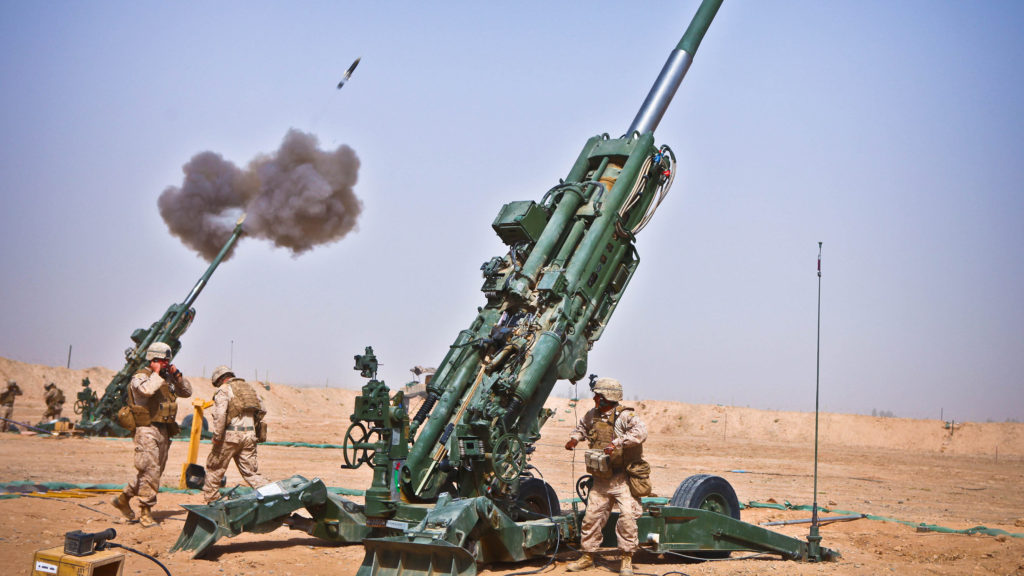Raytheon has been awarded a $95 million contract for engineering services for M982 Excalibur long-range precision artillery munitions, a U.S. Department of Defense release said.
“Raytheon Missiles Systems, Tucson, Arizona, was awarded a $95,000,000 hybrid (cost-plus-fixed-fee and firm-fixed-price) contract for engineering services to support the 155mm Excalibur program,” the Monday, January 29 release said. Only one bid was solicited.
The contract – with an estimated completion date of January 25, 2023 – is apparently for multiple orders and “work locations and funding will be determined with each order,” the release said.
The U.S. Army is the contracting activity.
M982 Excalibur
The M982 Excalibur is a GPS-guided 155mm artillery round capable of use within 75 meters (250 feet) of friendly troops or civilians. Raytheon developed the guidance system while Sweden’s BAE Systems Bofors developed the body, ballistics and payload.
Developed for longer-range use than conventional artillery shells, Excalibur has a range of approximately 40 to 57km (25 to 35 miles) depending on configuration. Folding glide fins give the projectile the longer reach.
Depending on range, the munition can strike within 5 to 20 meters (16 to 66 feet) of its intended target.
Although there has been some speculation, the U.S. military has not confirmed Excalibur was used during the battles to capture Tabqa and Raqqa in Syria. The shelling was so intense that U.S. Marine Corps units reportedly “burned out” the barrels on two of their M777 howitzers. In August 2017, the U.S. Army said that Watervliet Arsenal was working refitting 200 barrels with full-bore chrome-lined cannon tubes, 100 for the army and 100 for the USMC.
Excalibur can be fired from the British AS-90, the Swedish Archer Artillery System, the German PzH2000, the South African G6 howitzer, as well as the U.S. M198 and M777 howitzers and the M109A6 Paladin self-propelled howitzer. The munition is fielded by the U.S., Sweden, Canada, Australia and the Netherlands.
Raytheon is developing a laser-guided version, the Excalibur S which incorporates a digital semi-active laser seeker, allowing it to hit moving targets and strike targets without accurate GPS location information. A 5-inch variant – Excalibur N5 – is being developed for naval use.





